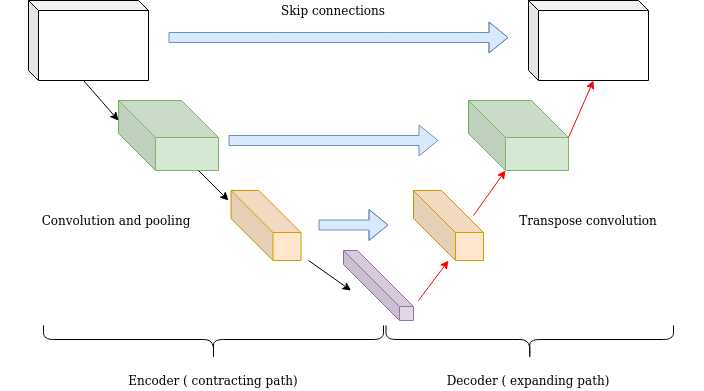The tiny circuits hidden inside your electronics, from smartphones to laptops, are the brains of the operation. These intricate networks, called printed circuit boards (PCBs), connect all the little components that make your devices work.
Designing these PCBs can be tricky, like a complex puzzle. Everything needs to fit just right, and electricity needs to flow smoothly. This can be slow and error-prone, but that’s where Artificial Intelligence (AI) comes in to help!
Become a PCB Design Superhero with AI!
Traditionally, designing PCBs (printed circuit boards) is a slow, manual process that is prone to errors. However, Artificial Intelligence (AI) is transforming this process.
- Faster turnaround times: AI automates tedious tasks like placing components and wiring them up.
- Enhanced design quality: AI acts as a virtual inspector, analyzing designs for potential errors. Catching these mistakes early saves time and money by avoiding costly fixes later.
- Simplified rule adherence: AI simplifies rule adherence by automatically checking if your design follows them, reducing errors, and ensuring everything works as planned.
- Improved board performance: AI suggests ways to make the circuit board work better, use less power, manage heat consumption, and even last longer.
Overall, AI is revolutionizing PCB design and translates to faster product development, reduced costs, and, ultimately, more reliable electronic devices.
3 Ways AI Supercharges Your PCB Design Workflow
Designing those tiny circuits, the heart of electronic devices, can be time-consuming. But AI can help you create electronic designs faster and smarter.
A. Automating the Tedious Stuff (Intelligent Automation)
Creating complex PCBs is a time-consuming process. But with the help of AI (Artificial Intelligence), the process is a breeze. Here’s how:
- Component Placement: AI algorithms analyze the size and connectivity requirements of each component on your PCB. Based on this analysis, they recommend optimal placement locations, ensuring efficient use of space and facilitating proper signal routing.
- Routing Optimization: Connecting components with wires used to be slow and prone to mistakes. AI takes care of this by making sure the connections are safe and the signals travel clearly. This automatic wiring improves the functionality of the circuits.
B. Making Your Design Flawless (Design Optimization and Error Reduction)
AI is a super genius! It analyzes your PCB layout and identifies potential problems before they cause issues in the final product. AI can help you optimize your electronics design in various areas.
- Signal Integrity: Tiny electrical currents travel on your circuit board like data. AI checks these pathways to make sure the signals stay strong and clear. This keeps your circuit working properly and prevents it from weakening or getting distorted.
- Stable Power Distribution: Imagine every part on your circuit board needing the right amount of electricity to work well. AI analyzes the power supply network (the wiring that delivers electricity) and identifies potential problems like voltage drops (voltage dips) or uneven distribution. By catching these issues early on, AI ensures a steady and reliable flow of power to all components on the board.
- Error Checking: Imagine designing a perfect circuit board but encountering problems during manufacturing. AI helps avoid these issues by analyzing your design for potential errors, like components being in the wrong place or using the wrong materials. These AI checks are like catching typos before you print a document – they save you time and money by fixing problems early. There are even specialized AI tools called DRC (Design Rule-Checking) that automate this process, ensuring your design meets all the electrical and manufacturing guidelines.
C. Learning from Every Design (Data-Driven Insights and Collaboration)
AI goes beyond just completing tasks; it constantly learns and improves. Here’s how it empowers your team of electronics designs.
- Data-Driven Insights: AI takes a deep dive into past projects, analyzing successes, failures, and how well different designs performed. By finding patterns in this data, AI can recommend the best approaches and highlight potential problems for your future electronics designs. This lets you base your decisions on real-world results, not just educated guesses.
- Intelligent Component Management: Forget hunting for parts! AI creates a special library stocked with pre-tested components that have all the information you need. This saves you time searching and lets you choose reliable parts with confidence, making your design process smoother.
- Feedback Mechanisms: AI helps your design team learn from each other. It analyzes data and highlights potential issues, sparking discussions about how to fix them. This encourages everyone to share their knowledge, from past successes to tricky problems they encountered. By using real-world data, the team can make better decisions and keep learning together.
The Future of PCB Design: Where AI Makes Things Awesome!
The capabilities of AI in PCB design are rapidly evolving, offering exciting new possibilities:
- Generative Design: Imagine skipping the drawing board entirely! AI can explore tons of different circuit board layouts based on your needs and goals. This lets you see many possibilities quickly, potentially leading to even better designs and faster development.
- Sophisticated Design Assistants: AI-powered design assistants are becoming more advanced, offering real-time feedback and suggestions. AI assistants analyze your circuit board design in real time, pointing out potential problems and suggesting improvements. This lets you catch mistakes early and make your design even better right from the start.
- AR/VR Integration: Thanks to AI, the future of designing circuit boards is 3D! Imagine using special glasses or headsets to see your design in full detail, like it’s right in front of you. This makes it easier to visualize and even work on your design together with your team in real time, helping you solve problems even faster.
- Self-healing PCBs: Imagine a PCB that can fix itself! Researchers are exploring AI-powered systems that can detect and address minor damage to PCB traces. This could revolutionize reliability and extend the lifespan of electronic devices.
- AI-driven Thermal Management: Heat is a major enemy of electronics. AI can become a thermal management whiz, analyzing heat distribution on your PCB and suggesting optimizations for cooling systems. This would lead to cooler-running devices with improved performance and longevity.
- Industry 4.0 Integration: As Industry 4.0 practices like smart factories and connected machines become more widespread, AI-powered PCB design will play a crucial role. Imagine AI seamlessly integrating with manufacturing processes, optimizing production lines, and identifying potential issues before they arise.
By automating tedious tasks, catching mistakes early, and even suggesting better designs, AI makes this process much faster and smoother. Get ready for a brighter future powered by smarter circuit boards!
AI: The Future Engine of PCB Design
AI is rapidly transforming PCB design. It’s no longer science fiction but a powerful tool for creating better boards faster. AI is reshaping the entire design process by automating tasks, optimizing performance, and promoting collaboration. This not only saves time and money but also opens doors for even more innovative and powerful electronics in the future. Get ready for a brighter future powered by more competent circuit boards!
As AI continues to evolve, we can expect even more groundbreaking advancements. Imagine self-healing PCBs that fix themselves or AI-powered thermal management systems with innovative electronic designs! The possibilities are truly limitless.




